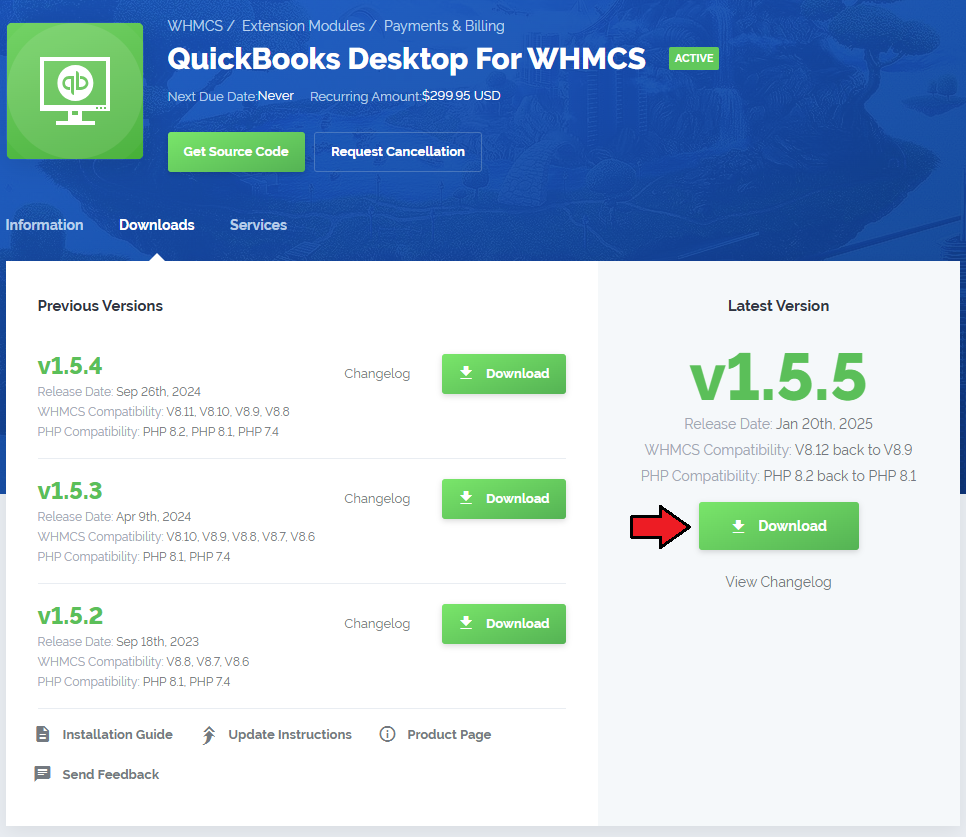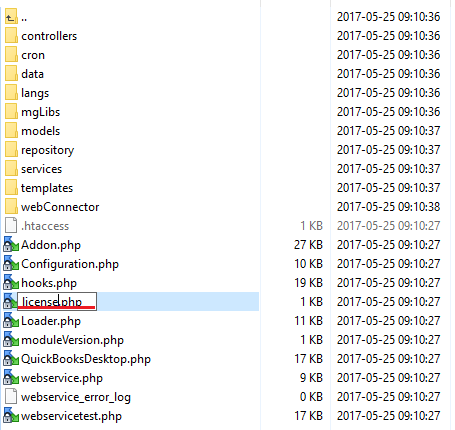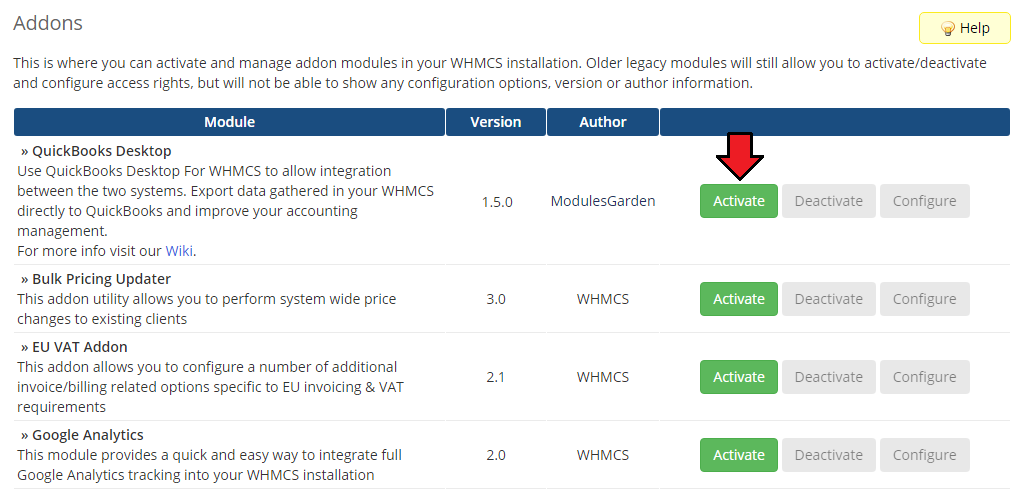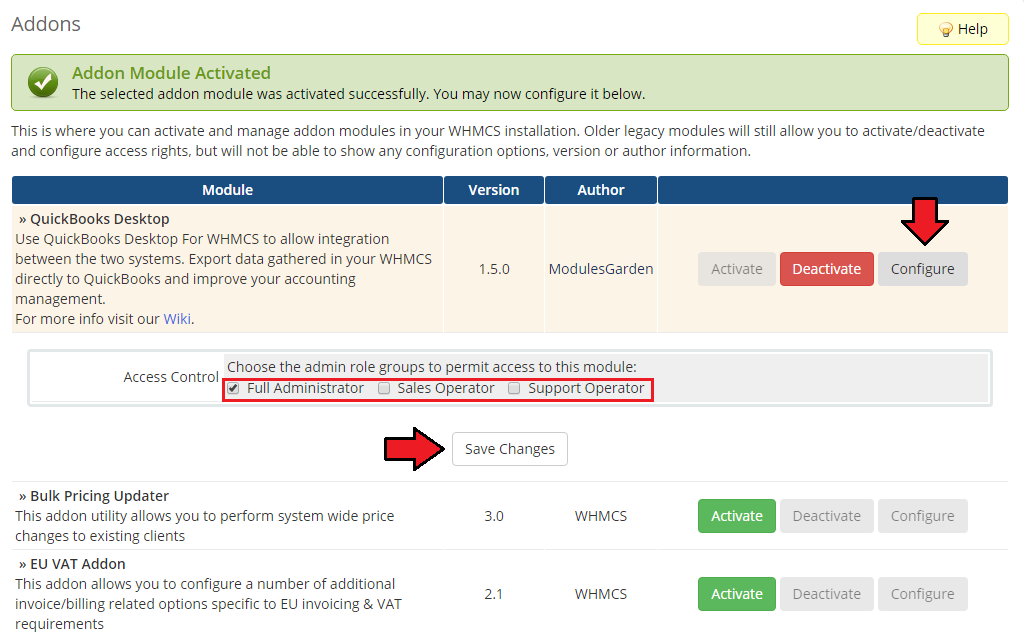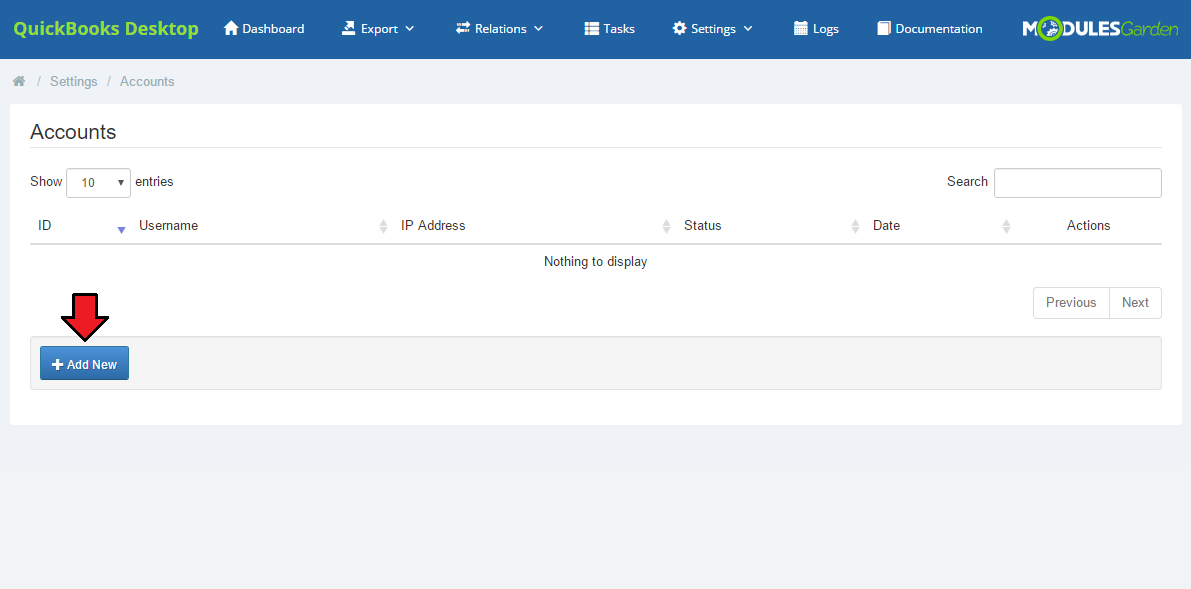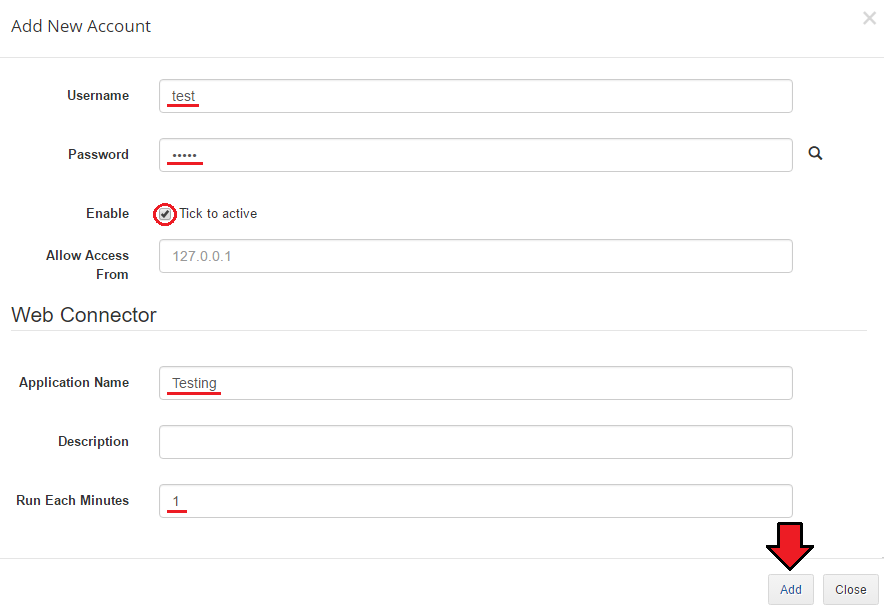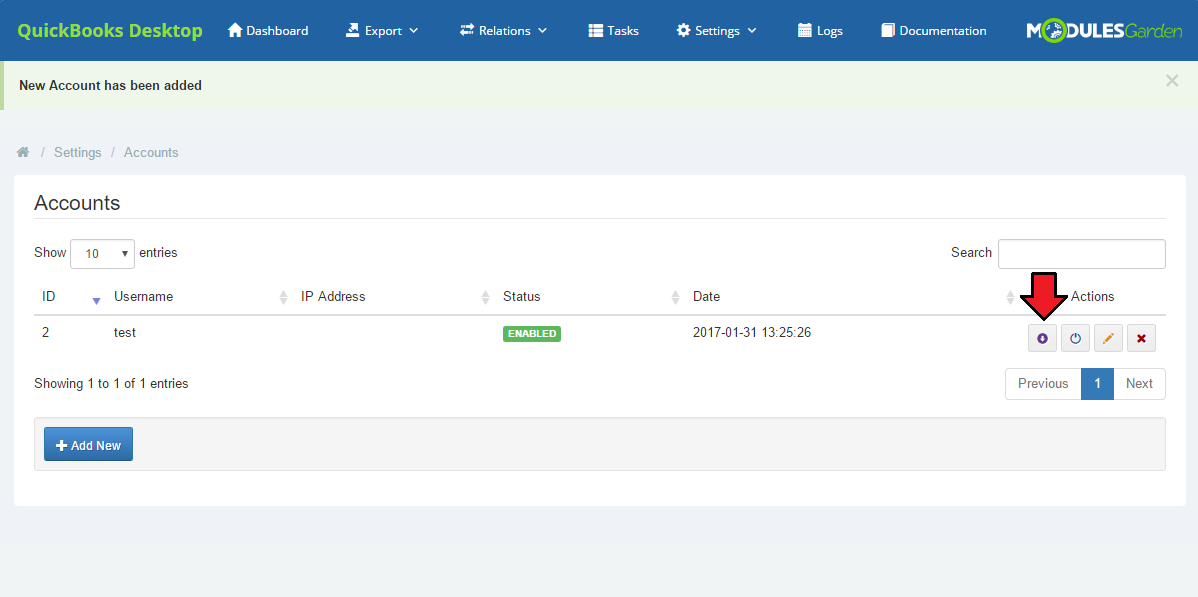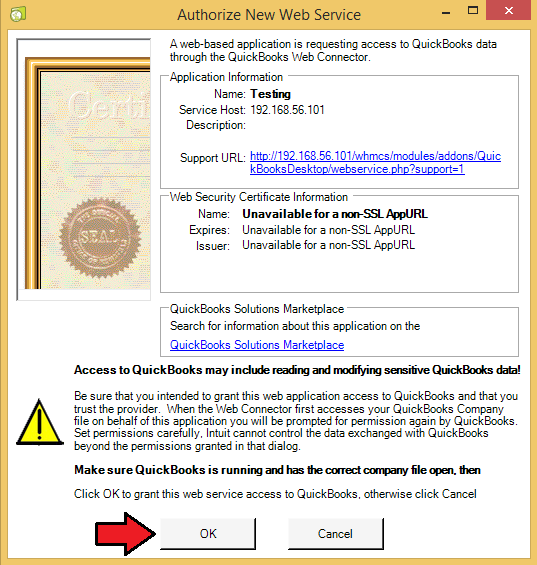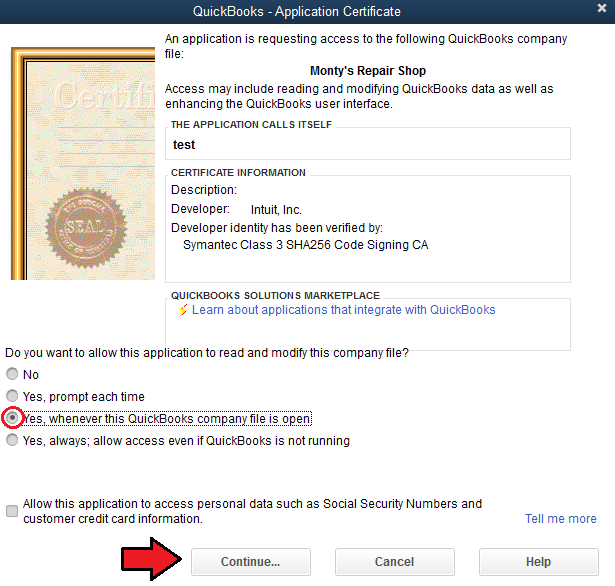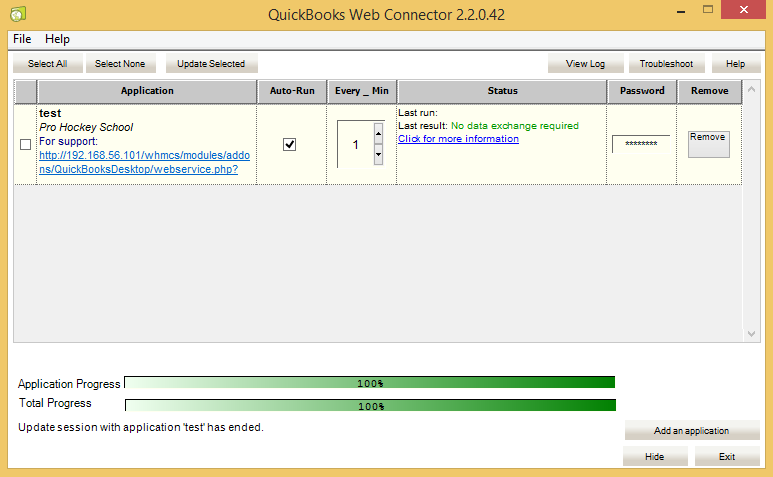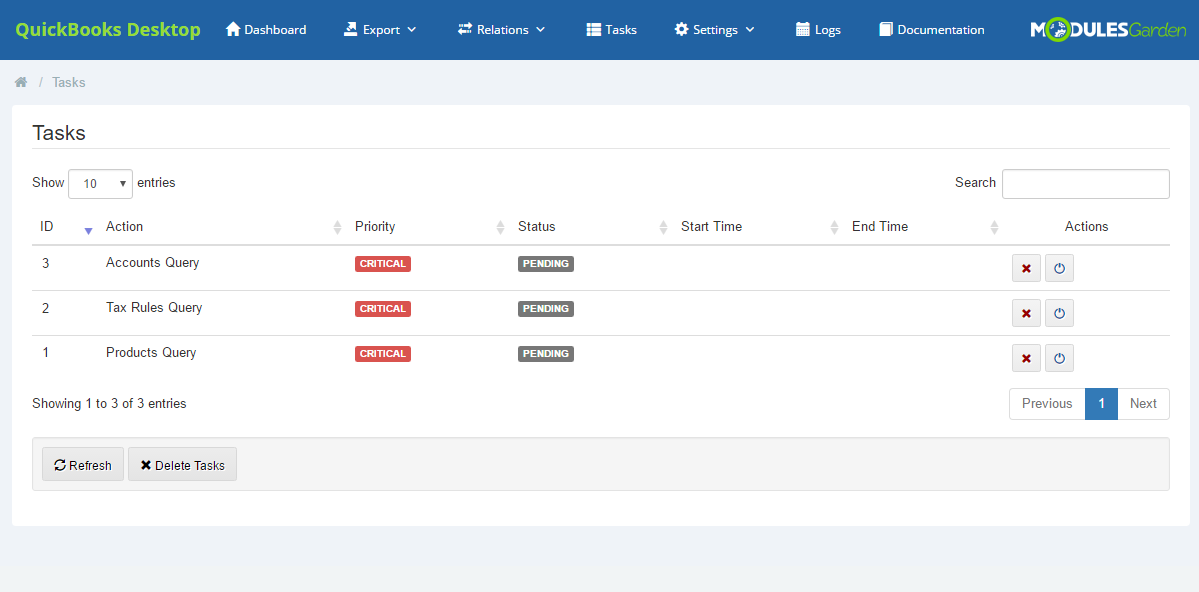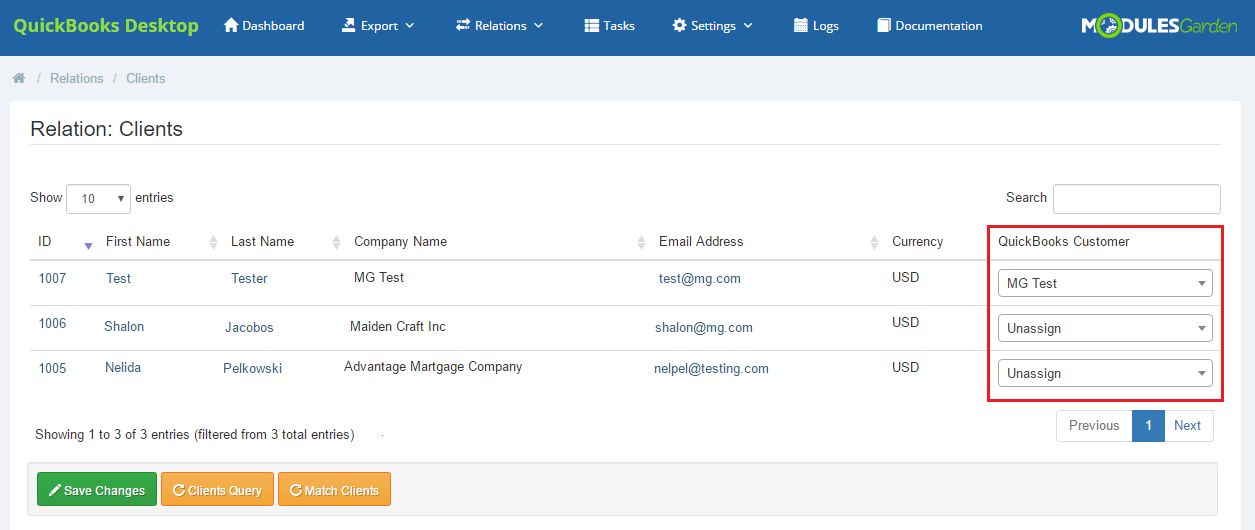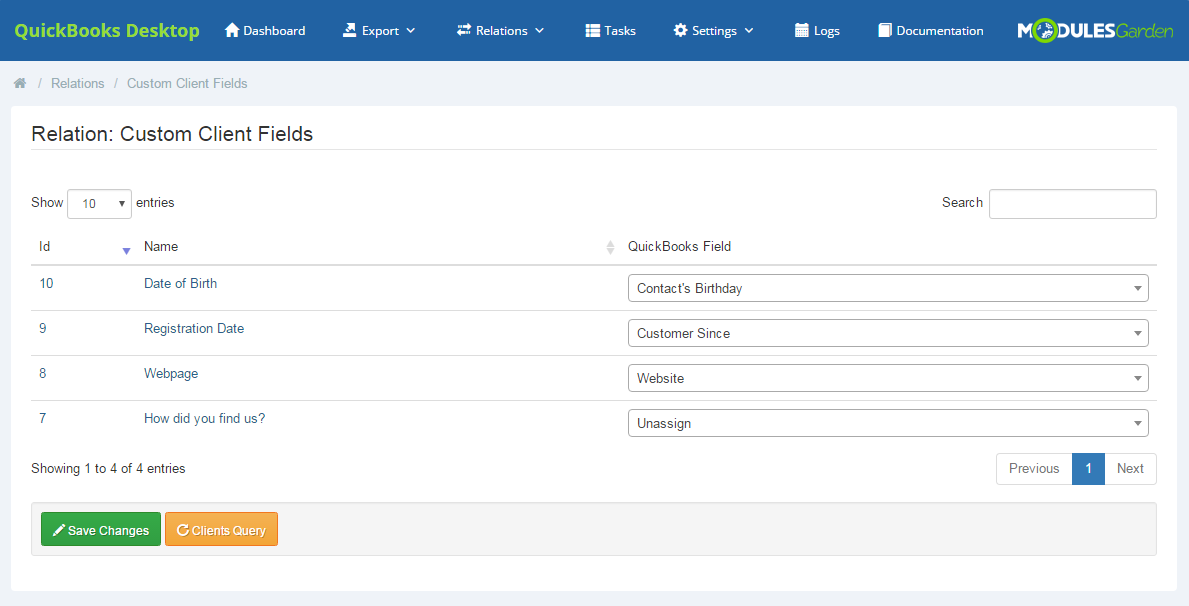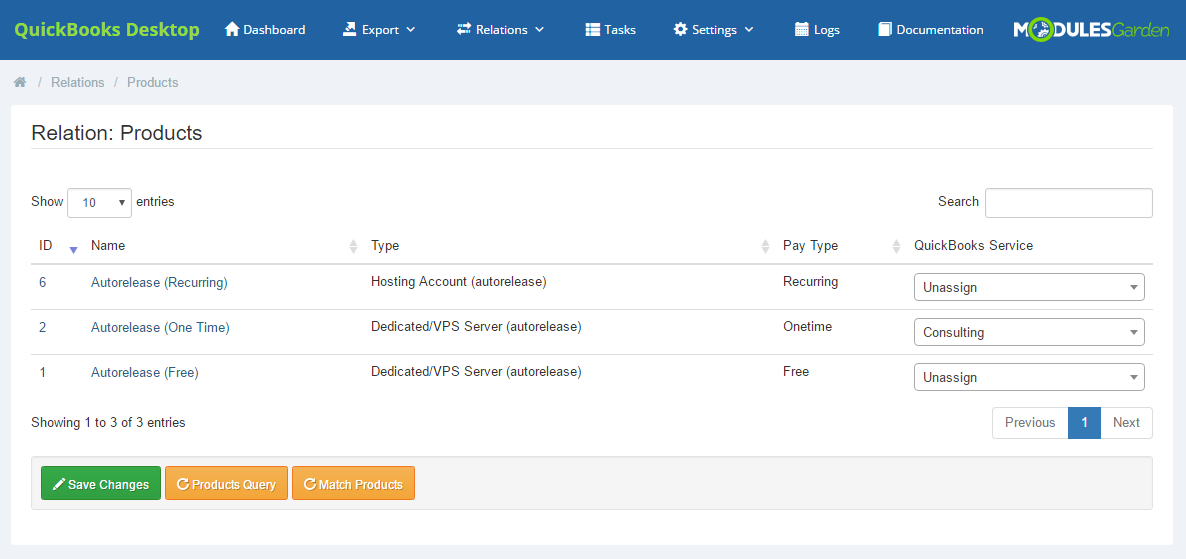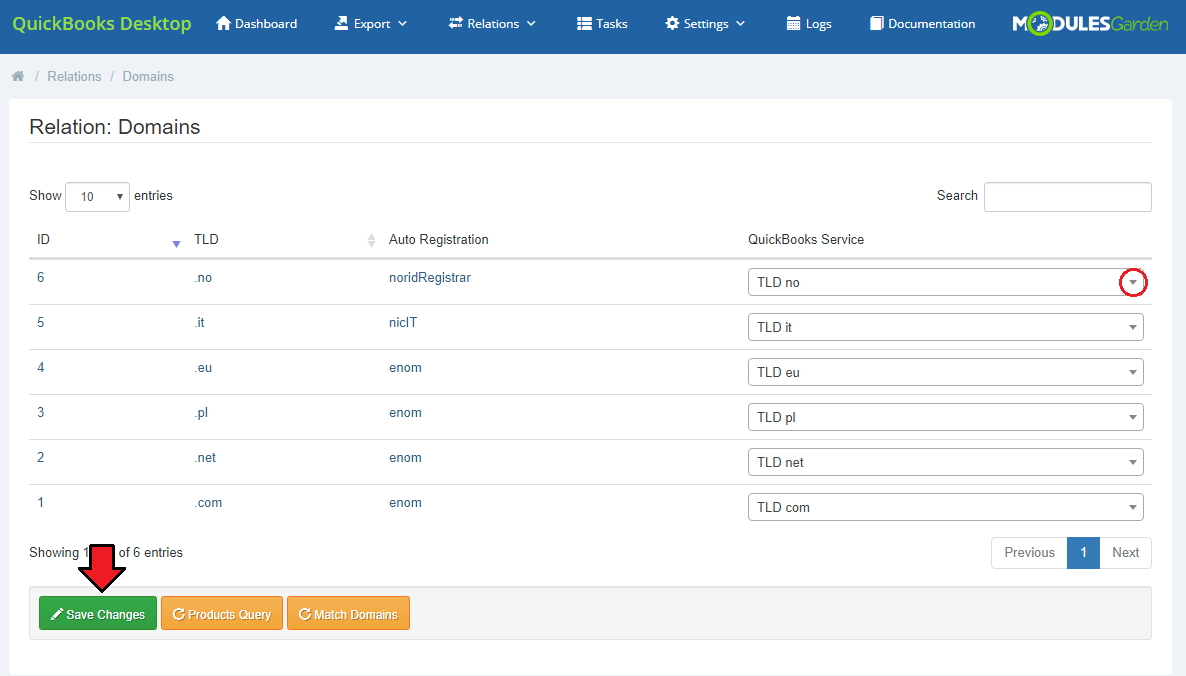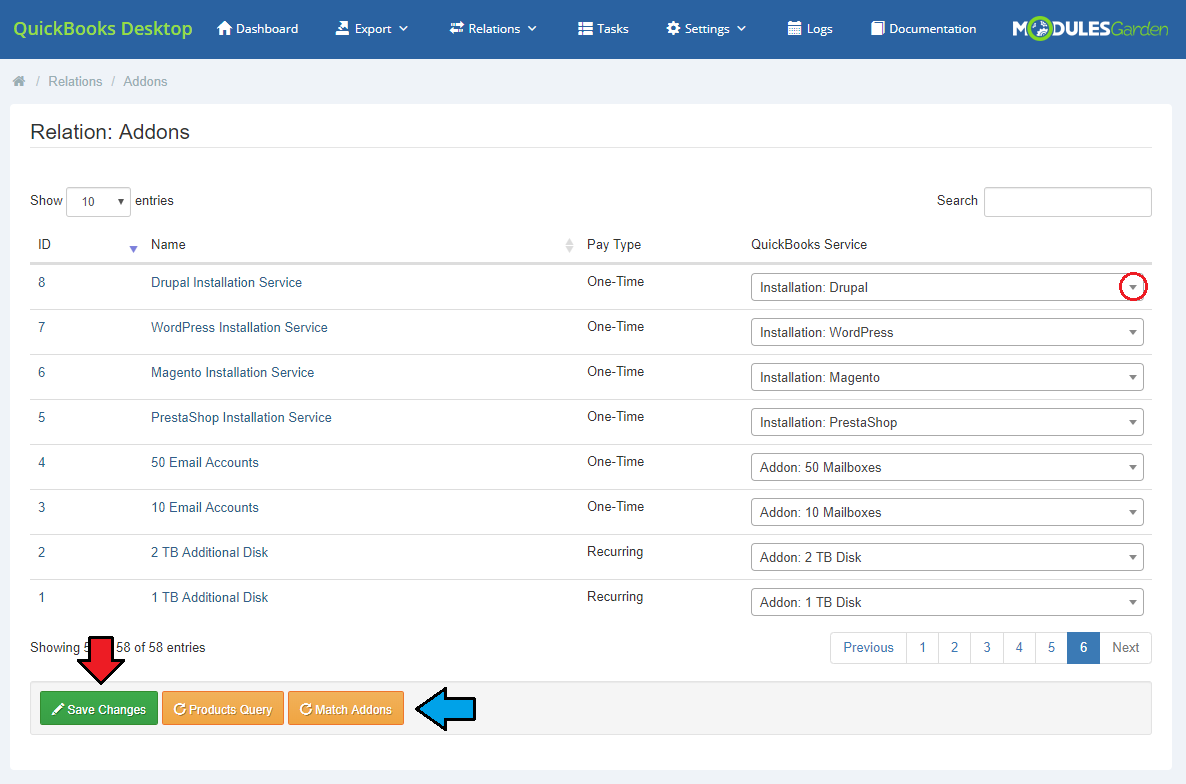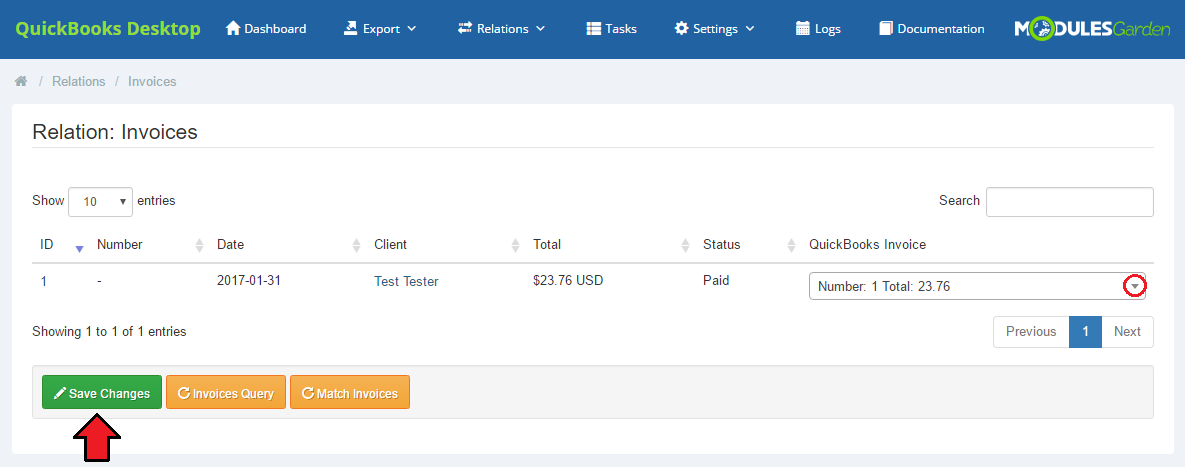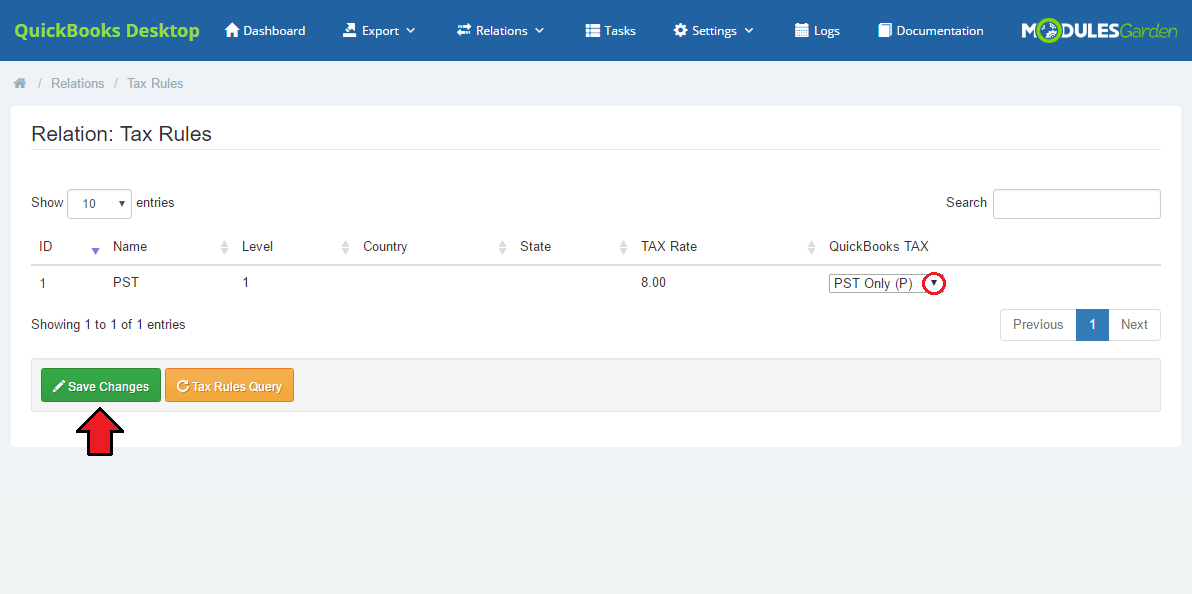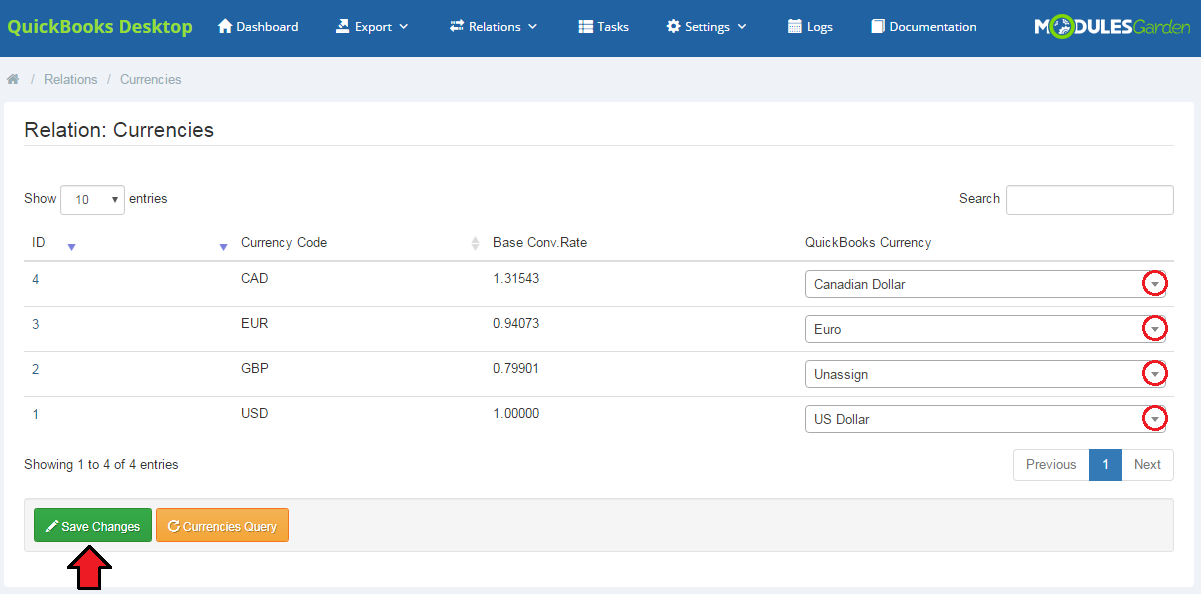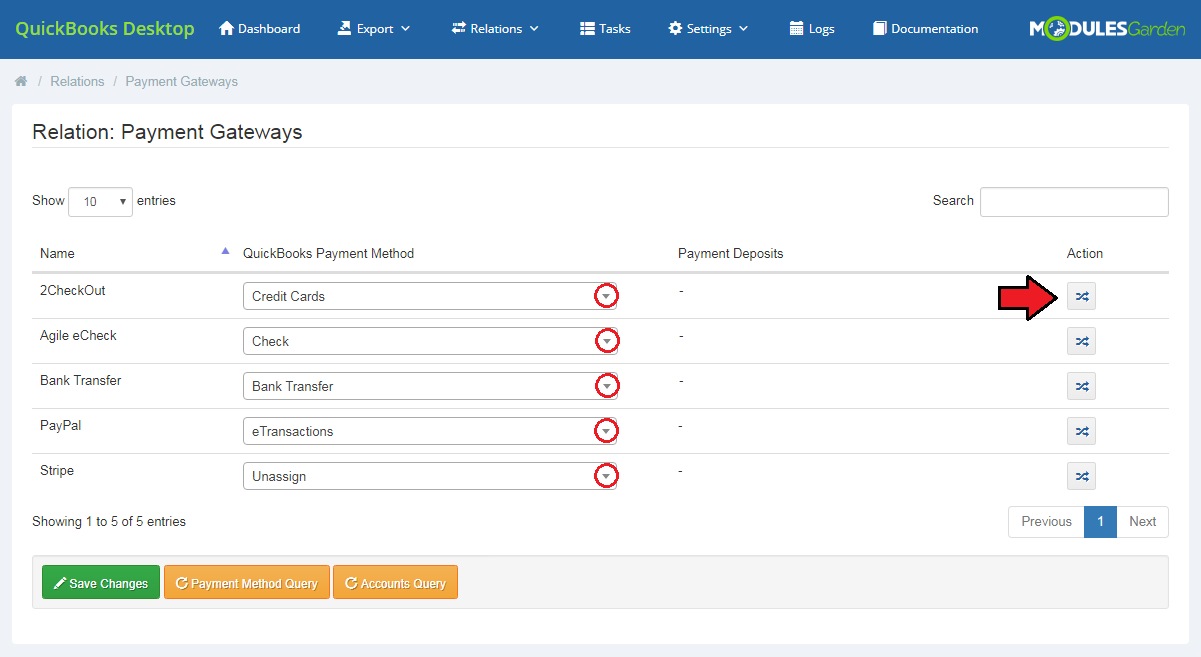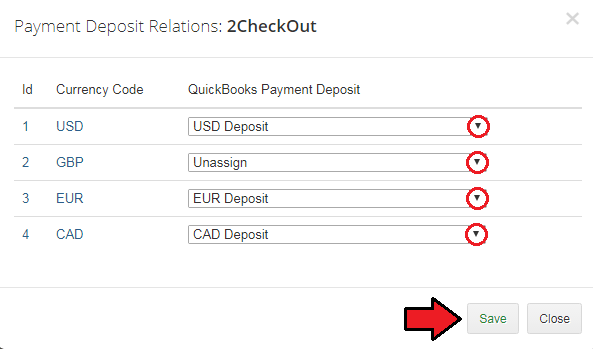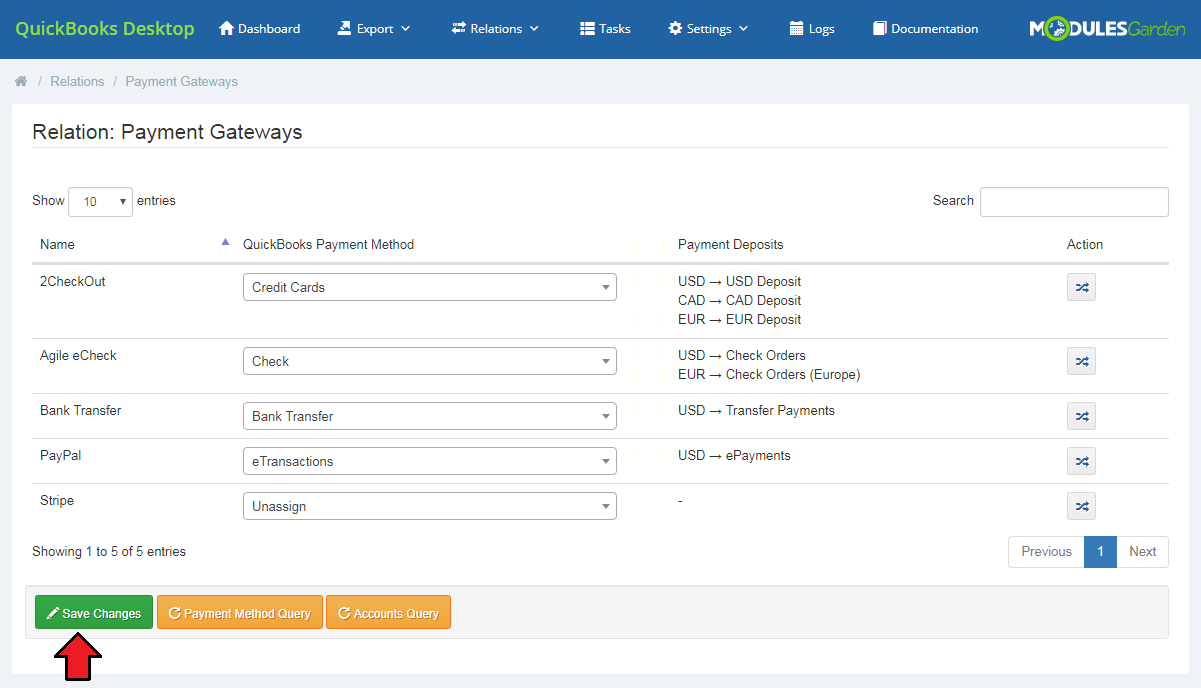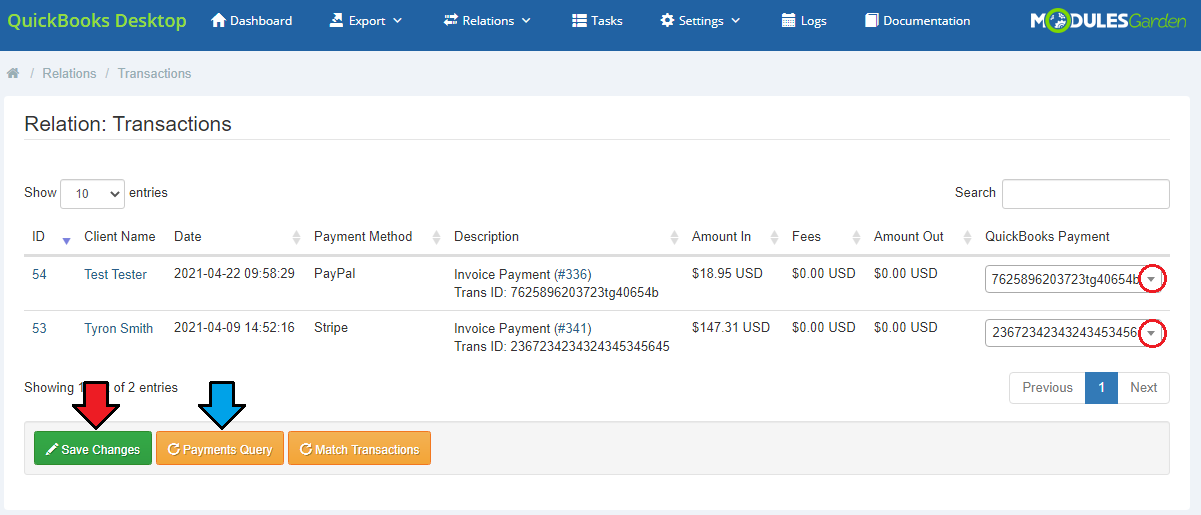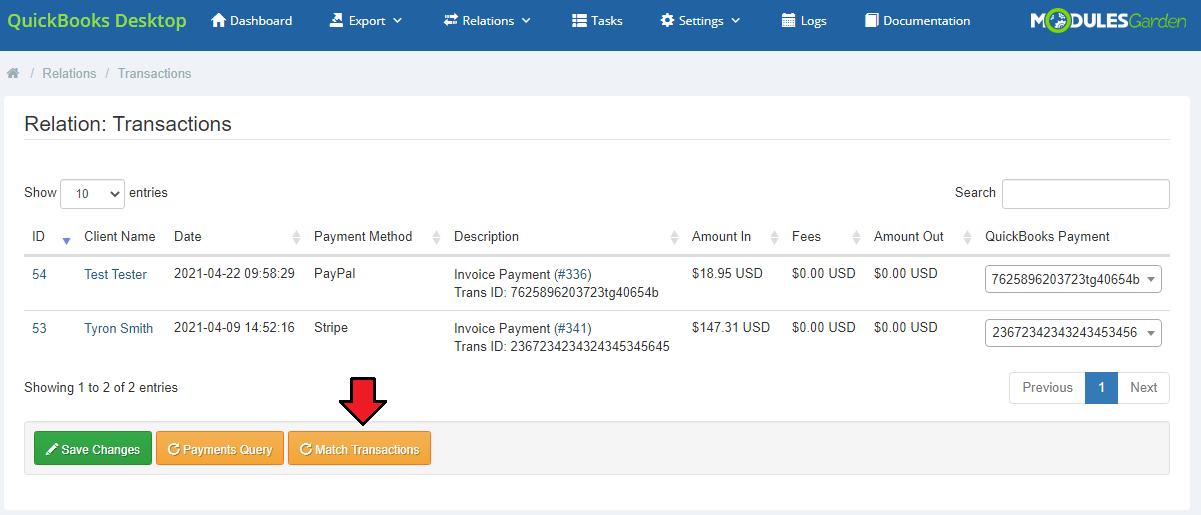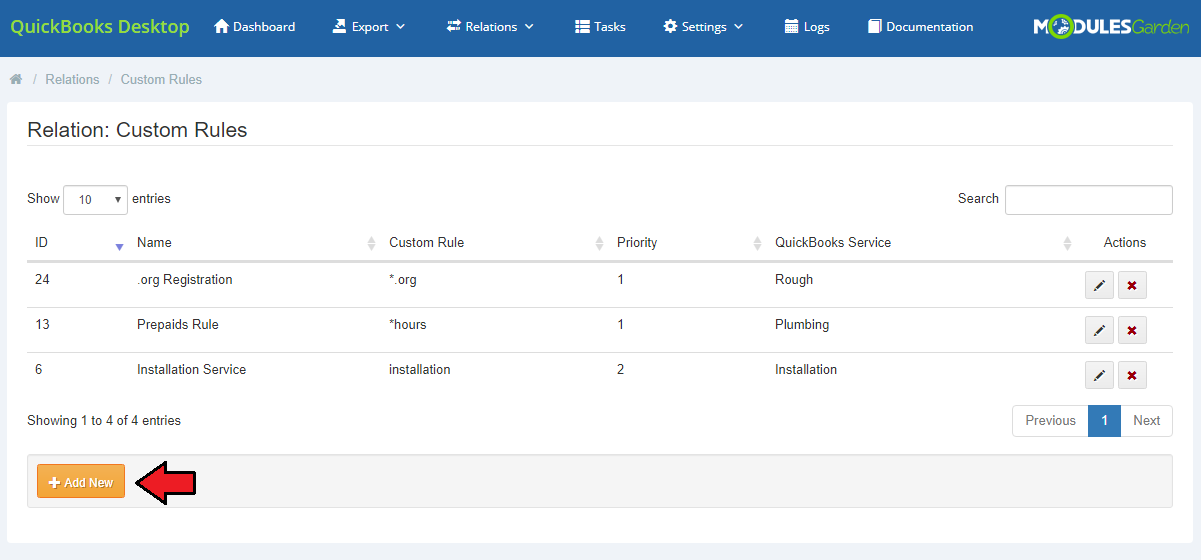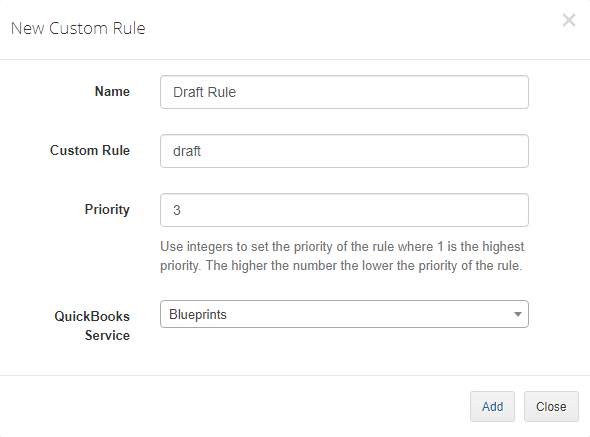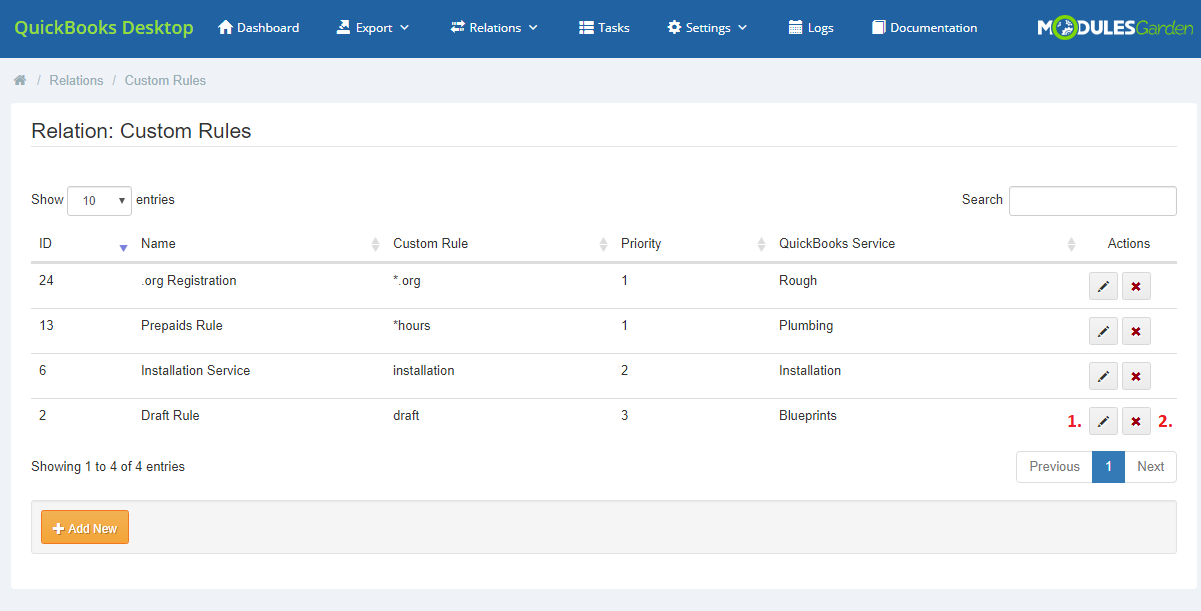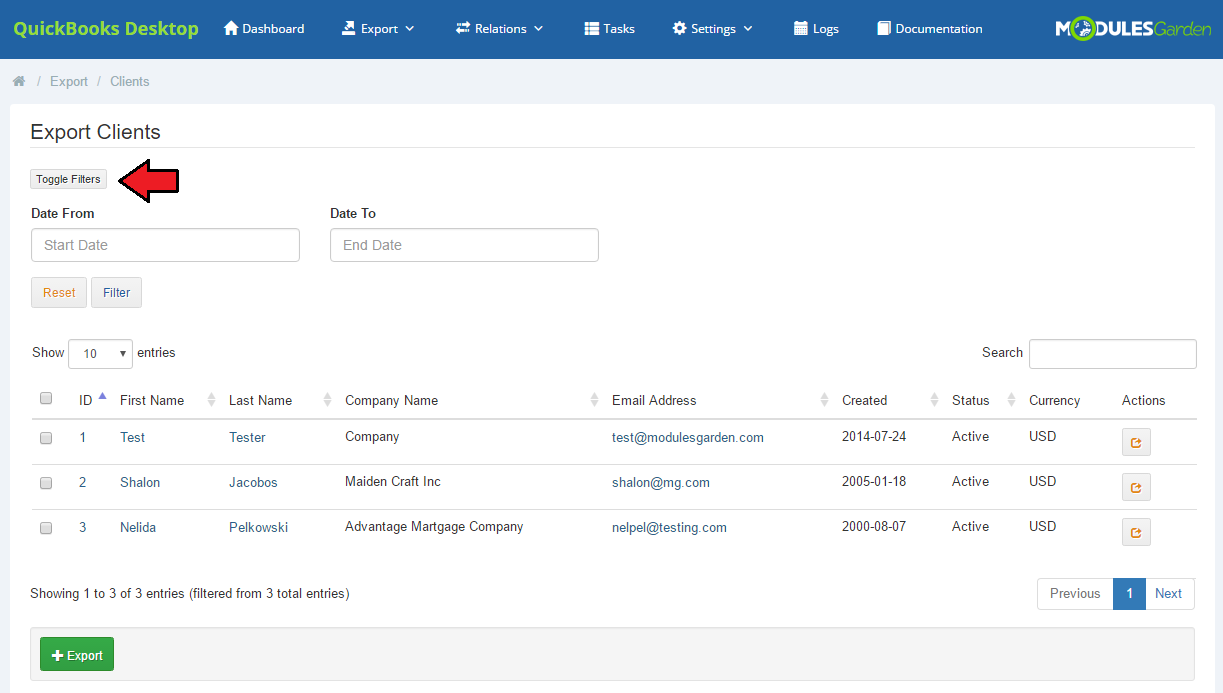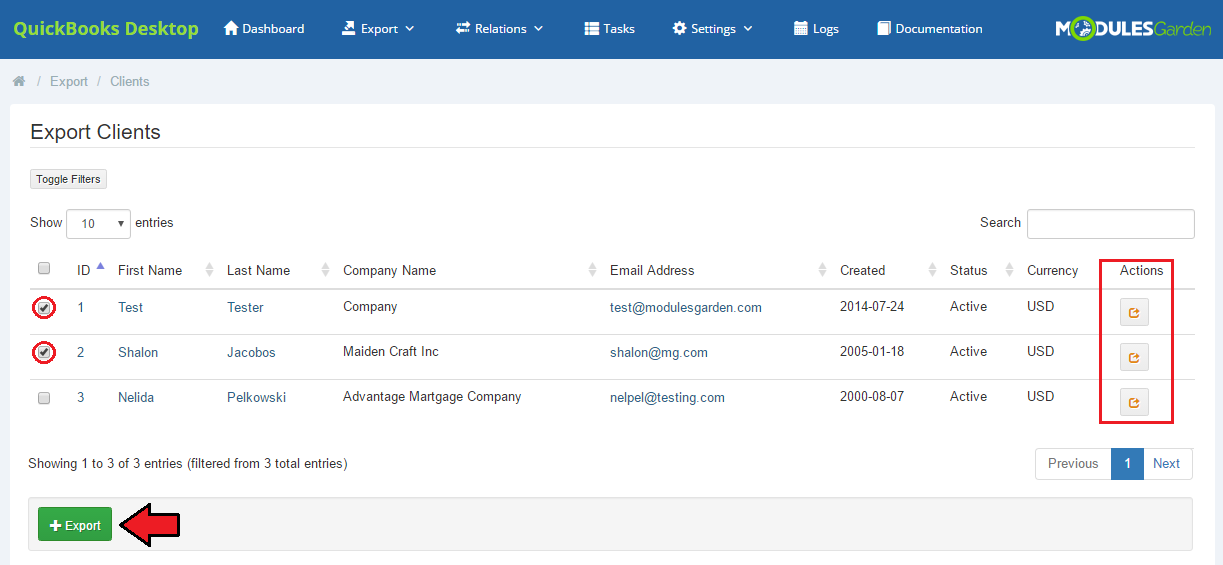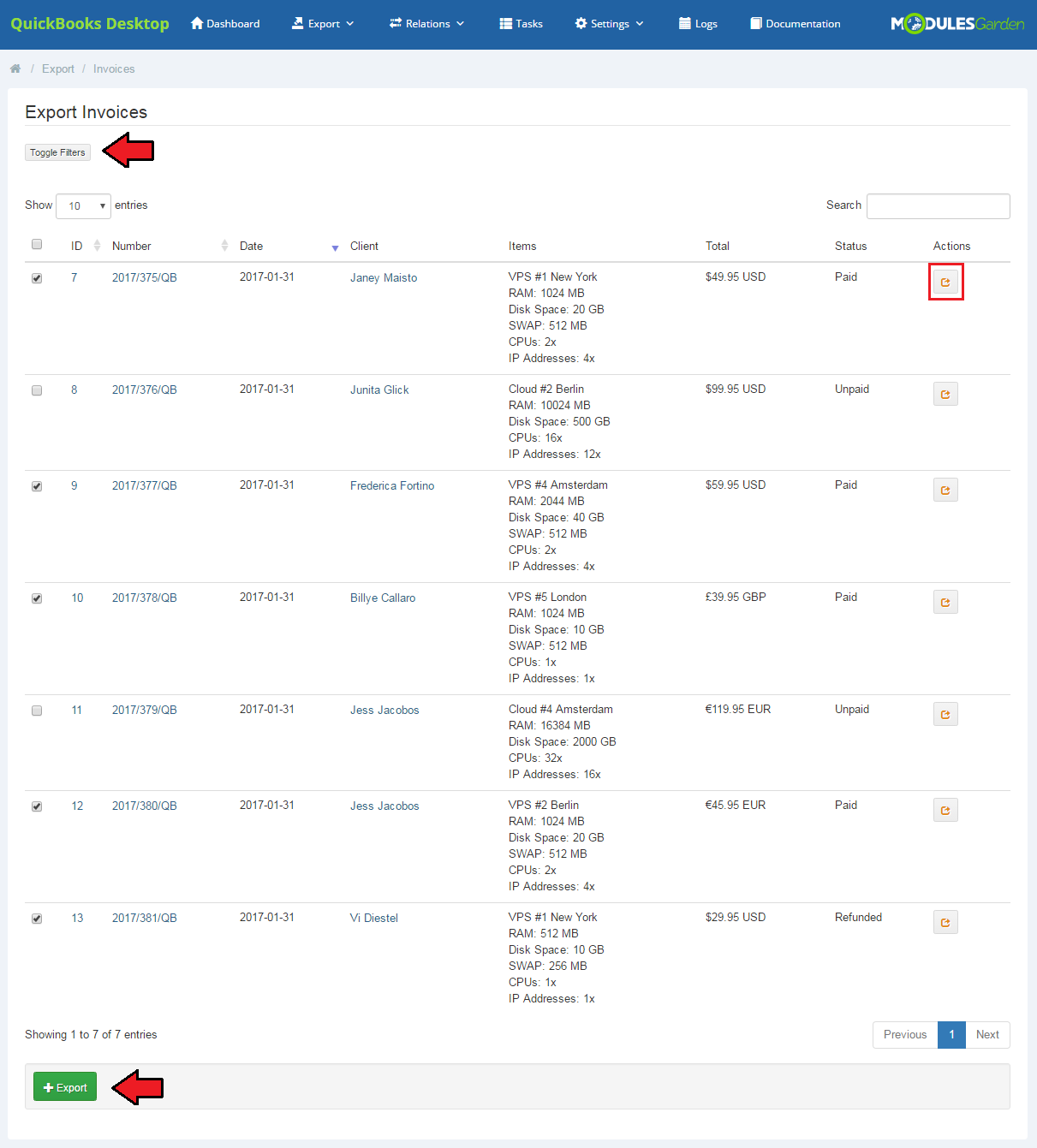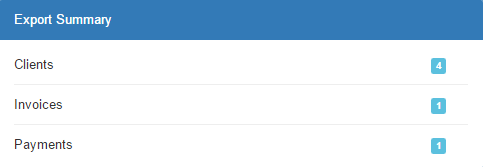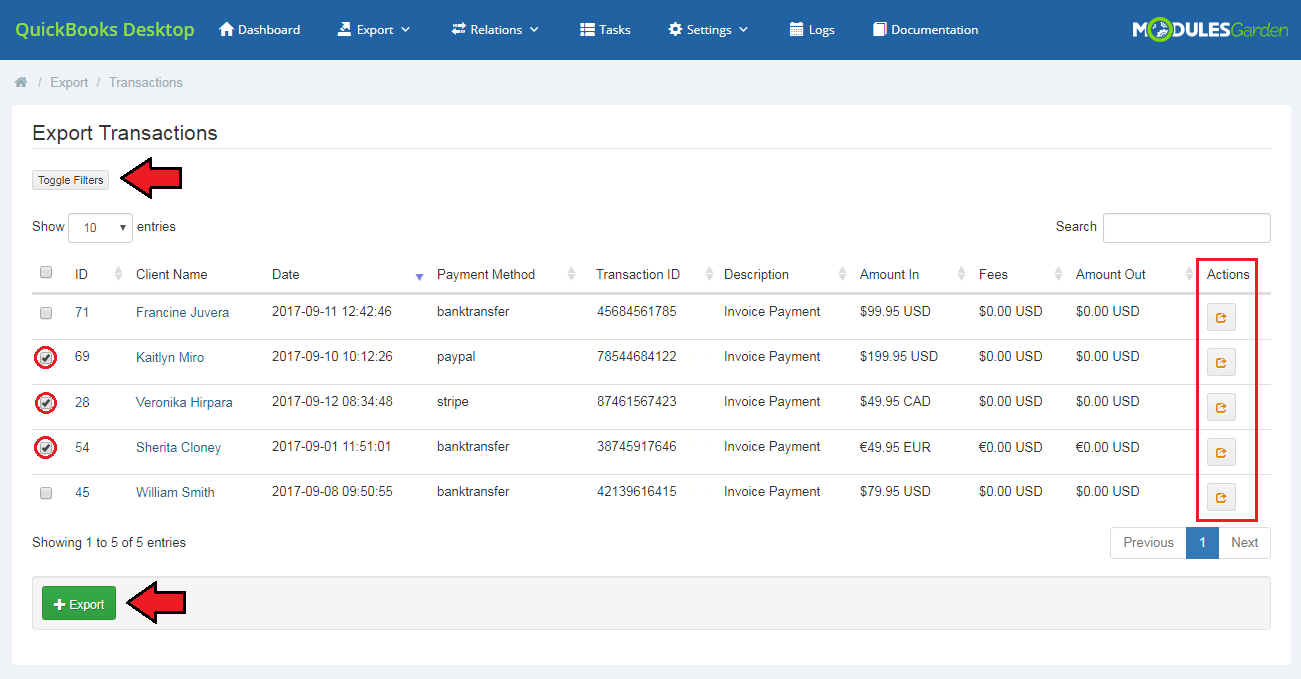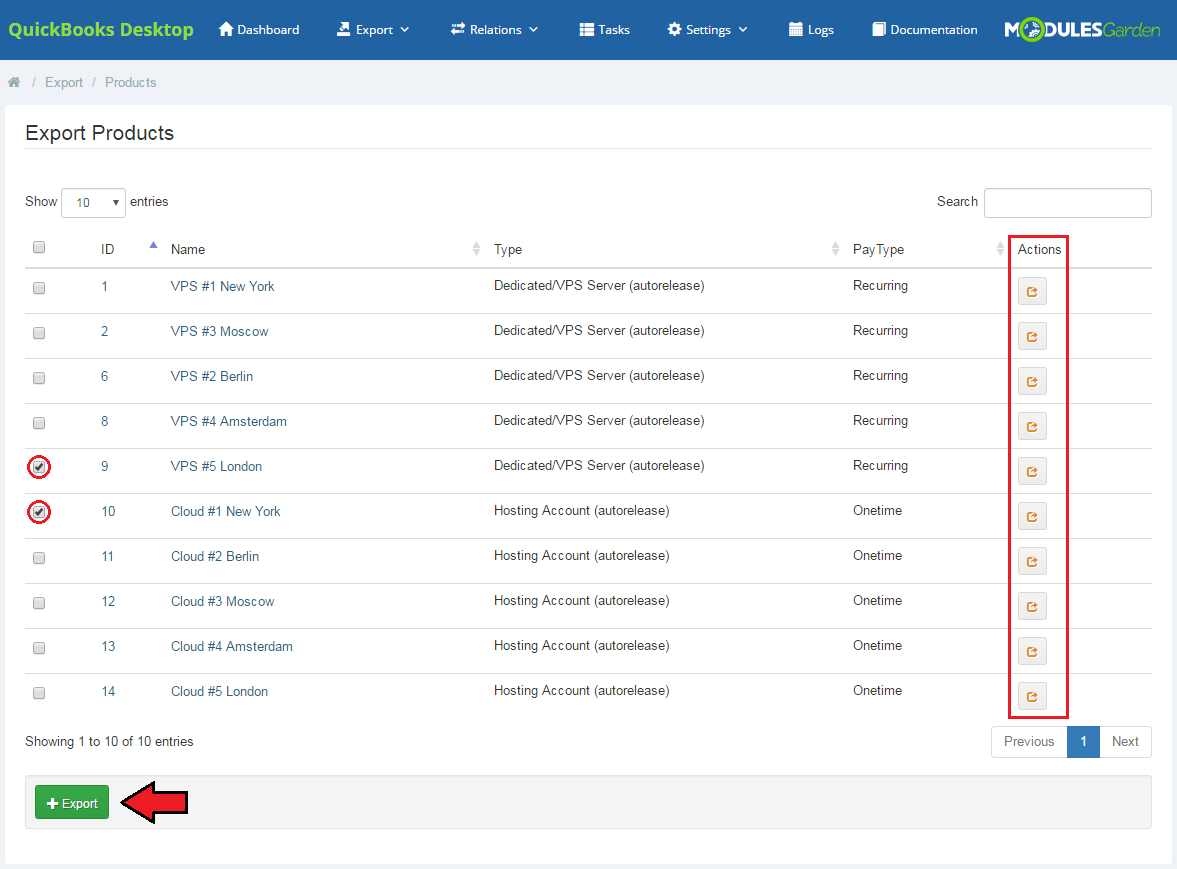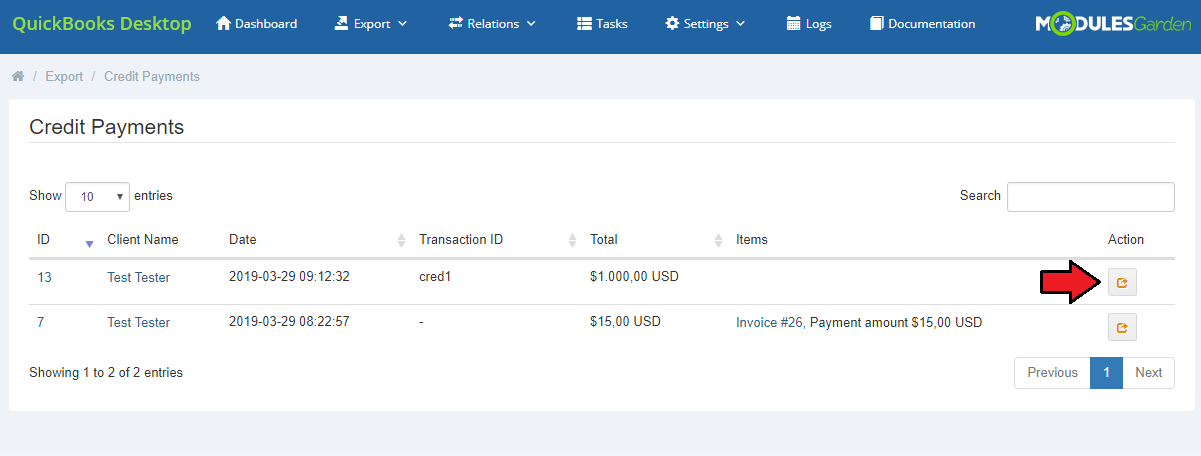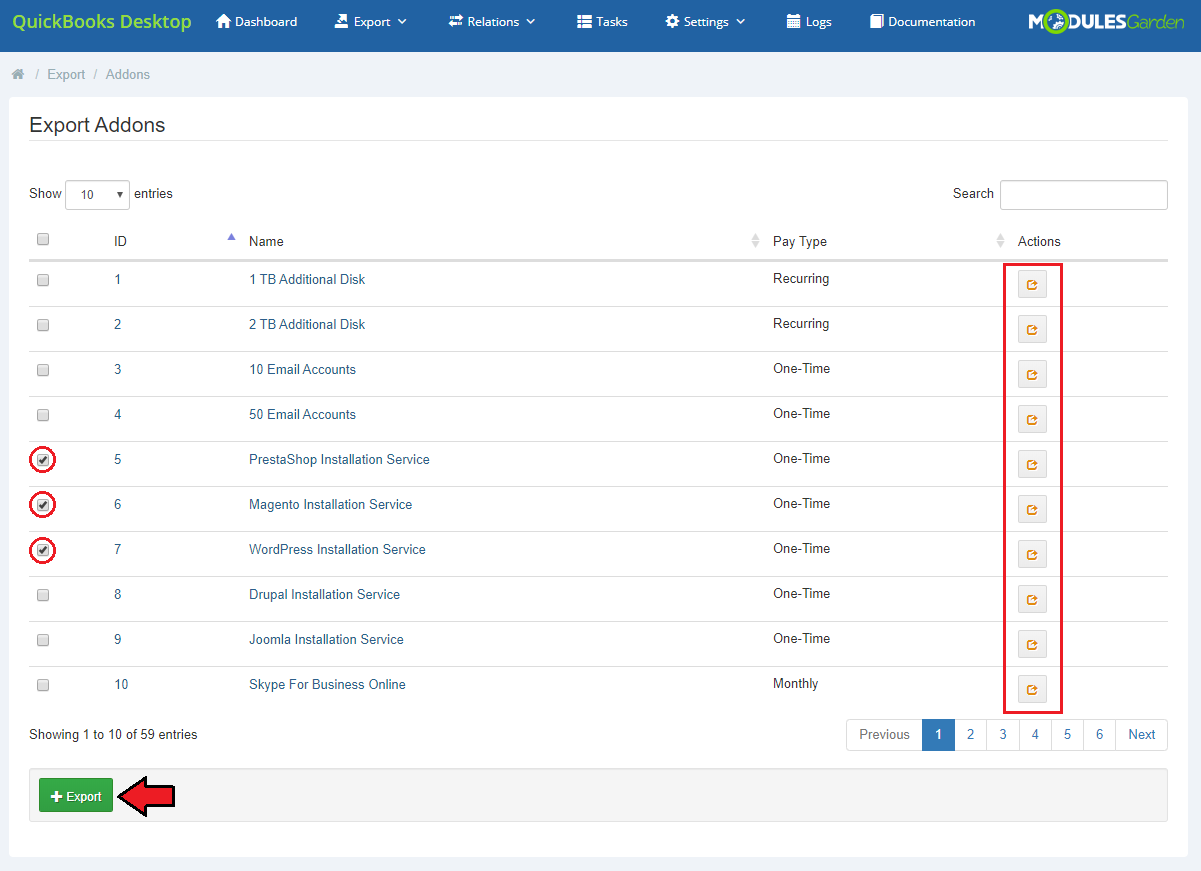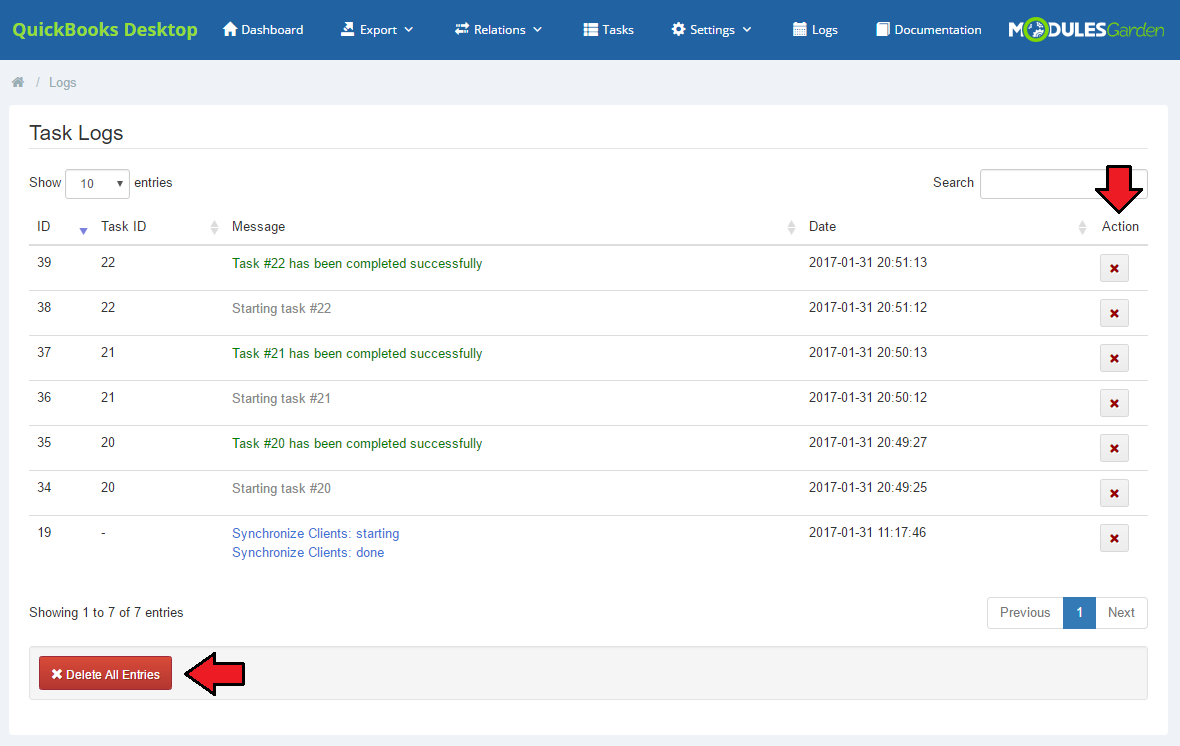QuickBooks Desktop For WHMCS
From ModulesGarden Wiki
(Difference between revisions)
|
|
| Line 1: |
Line 1: |
| | <meta name="keywords" content="quickbooks desktop for whmcs, quickbooks desktop configuration, whmcs quickbooks desktop management, whmcs quickbooks desktop installation, whmcs quickbooks desktop common problems, about whmcs quickbooks desktop, whmcs quickbooks desktop documentation, whmcs quickbooks desktop faq, whmcs quickbooks desktop help, whmcs quickbooks desktop guide, whmcs quickbooks desktop wiki, whmcs quickbooks tutorial, whmcs quickbooks tips, whmcs quickbooks wiki"></meta> | | <meta name="keywords" content="quickbooks desktop for whmcs, quickbooks desktop configuration, whmcs quickbooks desktop management, whmcs quickbooks desktop installation, whmcs quickbooks desktop common problems, about whmcs quickbooks desktop, whmcs quickbooks desktop documentation, whmcs quickbooks desktop faq, whmcs quickbooks desktop help, whmcs quickbooks desktop guide, whmcs quickbooks desktop wiki, whmcs quickbooks tutorial, whmcs quickbooks tips, whmcs quickbooks wiki"></meta> |
| | <meta name="description" content="ModulesGarden Wiki Contains All The Information You Need About The QuickBooks Desktop For WHMCS Module."></meta> | | <meta name="description" content="ModulesGarden Wiki Contains All The Information You Need About The QuickBooks Desktop For WHMCS Module."></meta> |
| | + | |
| | + | <h4 style="color: #ff0000; font-weight:bold; text-align:center;">Article update is ongoing on this page, watch out for broken links, unclear descriptions and images!<br/> |
| | + | We are sorry for the inconvenience caused.</h4> |
| | | | |
| | =About [https://www.modulesgarden.com/products/whmcs/quickbooks-desktop QuickBooks Desktop For WHMCS]= | | =About [https://www.modulesgarden.com/products/whmcs/quickbooks-desktop QuickBooks Desktop For WHMCS]= |
Revision as of 09:49, 12 May 2021
Article update is ongoing on this page, watch out for broken links, unclear descriptions and images!
We are sorry for the inconvenience caused.
QuickBooks Desktop For WHMCS module enables the two-way integration between WHMCS and QuickBooks Desktop and thereby helps you improve your accounting management.
This module synchronizes the clients, invoices and transaction details gathered in your WHMCS with QuickBooks database.
You can integrate the data either manually or automatically using a cron job. It is also possible to preview all the exported data thanks to the summaries available on the dashboard and logs.
|
| ✔ Import And Synchronize:
|
| ✔ Clients With Automatching
|
| ✔ Products With Automatching
|
| ✔ Product Addons With Automatching
|
| ✔ Domains With Automatching
|
| ✔ Invoices With Automatching
|
| ✔ Payment Gateways - Including Payment Methods, Deposits And Currencies
|
| ✔ Create Own Custom Rules
|
| ✔ Choose Default Product Item
|
| ✔ Choose Default Domain Item
|
| ✔ Choose Default Account For Products
|
| ✔ Set Exported Client Name Format
|
| ✔ Set Client Business Number Custom Field
|
| ✔ Define Automatic Export Settings
|
| ✔ Set Printed Invoices Custom Field
|
| ✔ Choose Accounts Receivable
|
| ✔ Choose Invoice Default Class
|
| ✔ Choose Gateway Fee Account
|
| ✔ Send Email Notifications About Task Failures
|
| ✔ View Export And Cron Run Summary
|
| ✔ View Web Connector Task
|
| ✔ Set Web Connector Account
|
| ✔ Supports PHP 7.1 Up To PHP 7.4
|
| ✔ Supports WHMCS V7.9 And Later
|
| ✔ QuickBooks Desktop Account
|
| ✔ QuickBooks Web Connector
|
| ✔ WHMCS With HTTPS and SSL Certificate
|
Installation
This tutorial will show you how to successfully install and configure QuickBooks Desktop For WHMCS.
We will guide you step by step through the whole installation and configuration process.
|
| 1. Log in to our client area and download the module.
|
2. In the downloaded file you might find one or two packages that support different PHP versions.
In the most recent versions of the module, you will find only one package that supports PHP 7.1 and later.
|
Previous updates of the module may contain two packages dedicated to various PHP versions.
The first one that supports PHP 5.6 up to PHP 7.0, and the second one addressed to PHP 7.1 up to PHP 7.3.
Note: Keep in mind that PHP versions 5.6 up to 7.0 are no longer officially supported and their security issues are not fixed or released any more. Find more info here.
|
| Note: You can check the current PHP version in your WHMCS. To do so, proceed to 'Utilities' → 'System' → 'PHP Info'.
|
| 3. Extract the package and upload its content into the main WHMCS directory.
The content of the package to upload should look like this.
|
4. When you install QuickBooks Desktop For WHMCS for the first time you have to rename 'license_RENAME.php' file.
File is located in 'modules/addons/QuickBooks_Desktop/license_RENAME.php'. Rename it from 'license_RENAME.php' to 'license.php'.
|
5. In order to configure your license key, you have to edit the previously renamed 'license.php' file.
Enter your license key between quotation marks as presented on the following screen. You can find your license key in our client area → 'My Products'.
|
6. Now you have to activate the module in your WHMCS system.
Log in to your WHMCS admin area. Go to 'Setup' → 'Addon Modules' . Afterwards, find 'QuickBooks Desktop' and press 'Activate' button.
|
7. In the next step, you need to enable the access to this module.
To do so, click on 'Configure' button, check the required group of administrators and press 'Save Changes'.
|
8. You have just successfully installed QuickBooks Desktop For WHMCS!
You can access your module under 'Addons' → 'QuickBooks Desktop'.
|
Configuration and Management
| QuickBooks Desktop For WHMCS is a module which allows you to synchronize any data on clients, invoices and transactions with QuickBooks Desktop.
|
Configuration
1. To configure your module properly, you first have to add a new account.
To do so, proceed to 'Addons' → 'QuickBooks Desktop' → 'Settings' → 'Accounts'.
|
In order to use the module fully, your account will be linked to Web Connector, the tool that enables the integration between your WHMCS system and QuickBooks Desktop.
Provide the necessary information. You can also specify when the data shall be synchronized automatically.
|
| Your account should appear on the list. It can be switched on/off, edited or deleted. For the proper configuration, you need to download the file of Web Connector now, as shown below.
|
| Be sure that your QuickBooks Desktop software is now running and there is your company file opened within in.
|
| Then, open the generated account file in the QuickBooks Web Connector. Click 'OK'. It will allow the module to authenticate your identity in QuickBooks system and let your WHMCS connect with it.
|
| Next, the certification window will appear to ask for permission to read and modify your company file. Choose the appropriate option and continue.
|
| You should see the successfully added account in Web Connector window:
|
2. Synchronization Settings - decide which of the possible synchronization options you want to enable.
Proceed to 'Addons' → 'QuickBooks Desktop' → 'Settings' → 'General' and tick the ones you are interested in.
Note: To enable the synchronization between the setting fields and their equivalents in QuickBooks Desktop, the 'Default Tasks' are required that will automatically run the necessary actions.
Since the 1.1.0 module version, the 'Default Tasks' are automatically added to the 'Tasks' list after the addon activation.
If you are using previous versions, you have to manually press on the 'Default Tasks' button to add all tasks to the list.
|
| In the 'Task' tab, you can check whether all the tasks are completed. Only then the values will be visible.
|
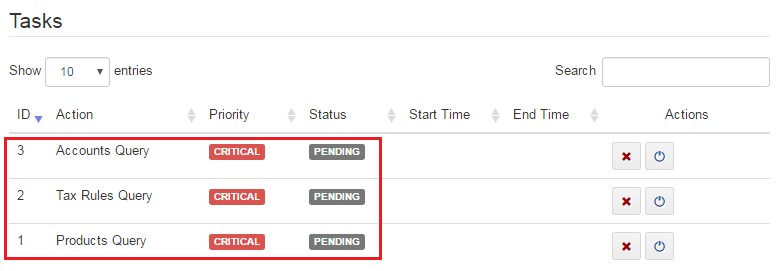
|
The following synchronization options are available:
Clients synchronization:
- Create - performed upon the client creation
- Update - takes place when the client account has been updated
- Delete - takes place when the client has been deleted
Invoices synchronization:
- Create - performed upon the invoice creation
- Update - takes place when the invoice has been updated or altered
- Delete - takes place when the invoice has been deleted
- Delete Cancelled - tick to remove the already cancelled WHMCS invoices from QuickBooks Desktop
Payments synchronization:
- Create - performed when the transaction has been completed
- Delete - takes place when the transaction has been deleted by an administrator
Refunds synchronization:
- Create - performed when the refund has been completed
- Delete - takes place when the refund has been deleted by an administrator
- Please note that both payments and refunds are handled together and thus are summarized on the dashboard as a single point called 'Payments'
Products synchronization:
- Create - performed upon the product creation
- Update - takes place when the product has been updated or altered
- Delete - takes place when the product has been deleted
Query synchronization:
- Invoices Query - performed before the invoice creation
- Payments Query - takes place before the payment creation
Customer Name Format synchronization:
|
For more information about Import Synchronization configuration, go to the Cron Jobs section.
Apart from choosing the required synchronization options, you have to decide which items from QuickBooks Desktop will be associated with 'Products ' and 'Domains' .
Note: Default Product will be used only when there is no relation set for the selected product in 'Relation: Product' section.
Choose other options from the dropdown menu to set up.
- Sandbox Date - by default, the date used in 'sandbox mode' is different from the actual one. Here you can change it.
- Shorten the Transaction ID - select this option to cut every transaction ID that is longer than 21 characters (the maximum length supported by QuickBooks)
- Tax Zero-Rated - used when a charged item is not taxed
- Clients Query Limit - define the number of users that shall be fetched from API at a time
- Clients Query Status - choose all, active or inactive clients to be fetched from API
- Clients Query Date - define the date from which the clients should be updated once performing the 'Clients Query' action.
- Clients Requires Printed Invoice - select Client Custom Field which will be used to mark invoices as 'Print Later' in the QuickBooks Desktop. This custom field may be either of a 'Tick Box' or a 'Drop Down' type with 'yes' and 'no' select options to be chosen by the clients
- Accounts Receivable - in case you use several different 'accounts receivable' in your QuickBooks Desktop, select one of them
- Invoice Default Class - in case you use several classes in your QuickBooks Desktop, select the class you want to use as default one
- Request Limit - Too many queries executed at once may cause the web connector to stop working. In that case you can limit the number of requests here.
- Failure Notifications - in this section you can select one administrator who will receive an email notification (in either hourly or daily intervals) about failures in the selected tasks. This is executed by cron job.
- Gateway Fee Account - define the relation between WHMCS transaction fees and QuickBooks deposit account.
Press Save Changes button.
|
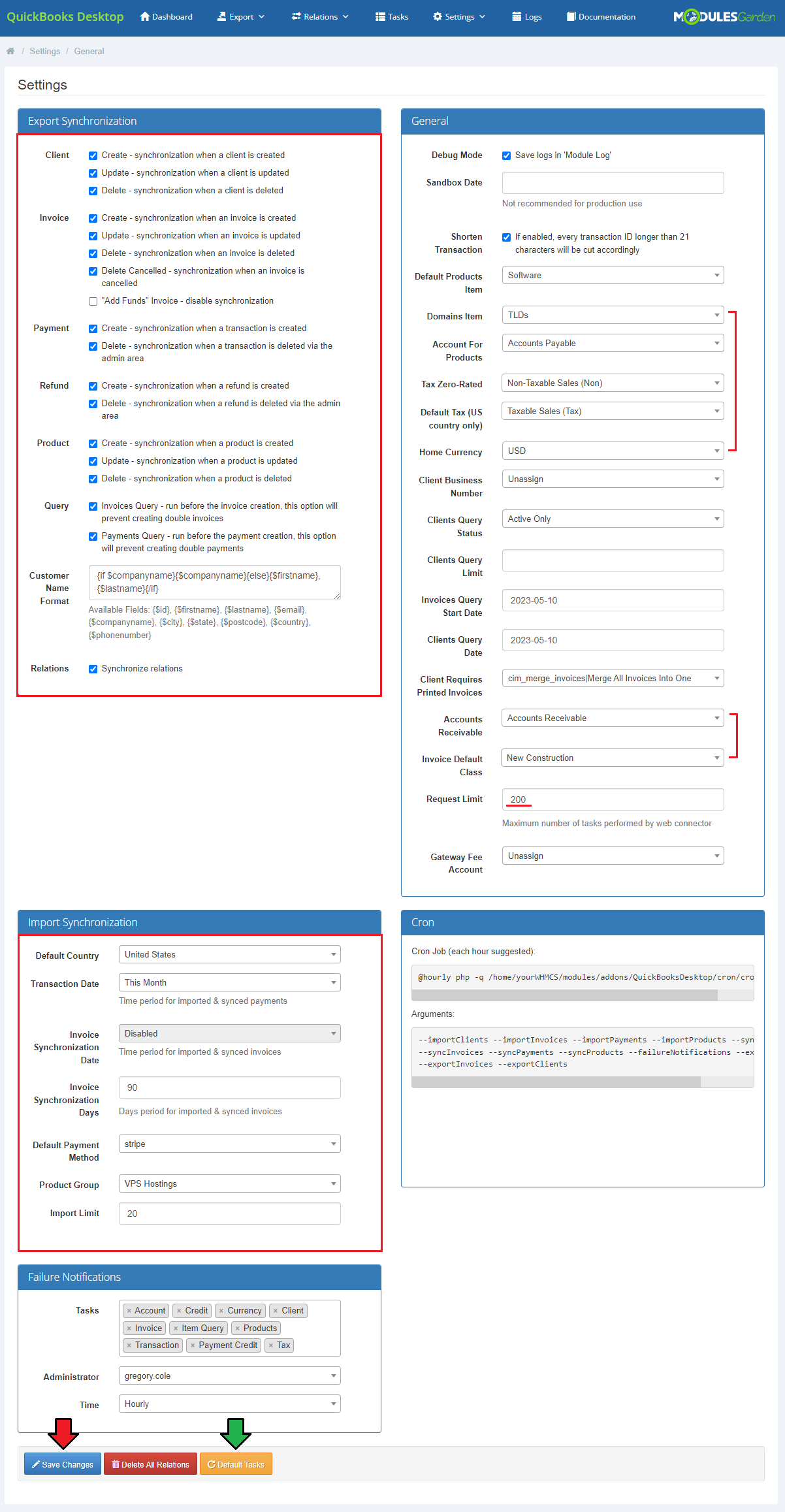
|
All the tasks and their statuses will be displayed in the Task tab.
Note: Some tasks are automatically blocked when created. However, they will be automatically unlocked at a later stage of execution.
|
Relations
3. To use the module properly, remember to set the relations correctly.
It is possible to manually declare relations between WHMCS clients, products as well as invoices and corresponding QuickBooks Desktop elements.
This feature is especially helpful to avoid confusion and misunderstandings.
Please note that this is an extra option, which grants you the possibility to manually configure relations.
|
Relation: Clients
One of possible relations to be declared are relations between WHMCS clients and QuickBooks customers.
Proceed to 'Relation' → 'Clients,' you will find there a list of all clients, with their email addresses, that exist in WHMCS,
those who have not been exported to QuickBooks Desktop yet as well as those already exported.
All exported and imported clients have automatically set relations. It is possible to match clients relations using 'Match Clients' button or manually choose them from the dropdown menu in 'QuickBooks Customer' section.
|
Relation: Custom Client Fields
When you go to 'Relation' → Custom Client Fields' , you will find a list of fields which appear in the client profile.
Firstly, select 'Clients Query' option and wait until all tasks are done.
Note that if all clients in QuickBooks Desktop have the same custom field with no value provided, that field will not be synchronized and displayed on the list. At least one of the clients has to have it filled in.
|
Relation: Products
Product relations can be declared manually and for each product separately along with those declared in 'Configuration' → 'Synchronization Settings.' '
Proceed to 'Relation' → 'Products,' you will find there a list of all products with their type and payment standard.
In the last column, there is a dropdown menu with all QuickBooks Desktop items that can be assigned to exported products.
|
Relation: Domains
In 'Relation' → 'Domains' tab, you will find a list of all WHMCS domains with their TLD. You may assign a WHMCS domain to a QuickBooks service here.
Just select such a service from a dropdown menu and save the changes.
|
Relation: Addons
You can assign addons to the services already existing in QuickBooks. Just go to 'Relation' → 'Addons' directory and choose the QuickBooks service from a dropdown menu.
Remember to save the changes.
You can also use the 'Match Addons' button to find any matches automatically.
|
Relation: Invoices
In 'Relation' → 'Invoices' directory, you will find a list of all WHMCS invoices with their ID, date of creation, assigned client, total sum and status.
It is possible to assign such a WHMCS invoice to another invoice already exported to QuickBooks Desktop. Just choose such from a dropdown menu and save changes.
Transactions between the two invoices will be synchronized then.
|
Relation: Tax Rules
In 'Relation' → 'Tax Rules' directory, you will find a list of defined tax rules.
Firstly, select 'Tax Rules Query' option and wait until all tasks are completed. Then, assign each rule to a specific QuickBooks tax. Select one from a dropdown menu and save changes.
Note: QuickBooks Desktop does not support WHMCS's level 2 taxes. Only level 1 taxes are supported.
|
Relation: Currencies
In 'Relation' → 'Currencies' directory, you will find a list of defined currencies.
Firstly, select 'Currencies Query' option and wait until all tasks are completed. Then, assign each currency to a specific one from QuickBooks Desktop. Select one from a dropdown menu and save changes.
Note that if you would like to use several currencies, 'Multicurrency' option has to be enabled in QuickBooks Desktop settings. Otherwise, the process will not be successful.
|
Relation: Payment Gateways
| In 'Relations' → 'Payment Gateways', there is a list of available payment methods. Select the one you wish to use from a dropdown menu. Save changes.
|
When you click the button in the 'Action' section, you can set relations for previously chosen payment method.
Assign QuickBooks Payment Deposits to a single currency.
|
In this way, the relation between payment methods, upon which choosing the deposit a transaction in selected currency will go to depends, has been set.
Finally, do not forget to save changes.
|
Relation: Transactions
In 'Relation' → 'Transactions', there is a list of transactions.
Press 'Payments Query' to fetch all the WHMCS transactions, then assign the QuickBooks Payment to every one you wish, use the dropdown menu. Save changes.
|
Use the 'Match Transactions' button to automatically find an existing relation in QuickBooks without manual search for every single transaction.
You will get an extended list with information for which of the transactions a match has been found, and for which no.
|
Relation: Custom Rules
In 'Relations' → 'Custom Rules', there you can create and manage existing custom rules, which aim is to manage items that exist on the invoice but have no relation.
The rule task checks if these items have any matching type in QuickBooks.
Press ' Add New' button to create a custom rule.
Important! Please remember that 'Custom Rules' are based on regular PHP expressions. An exemplary 'Custom Rule' is car(.*)
|
Provide necessary details of the created rule to make it work properly. These are:
- Name - any friendly name of the rule
- Custom Rule → for example car(.*) which is a regular PHP expression
- Priority - the higher the number, the lower the priority, use integers only
- QuickBooks Service - select service that will be checked with the rule
Press 'Add' when ready.
|
A new rule appears on the list immediately.
You may edit its specification at any moment, just press the marked on the screen icon (1).
Delete (2) unused rules from the list.
|
Management
In this section, we will show you the possibilities of QuickBooks Desktop For WHMCS.
Once it has been properly connected with QuickBooks Desktop and all the configuration is complete, we can move to the 'Export' section.
|
Export
Our module offers several ways to export any data gathered in your WHMCS.
Read the below points to learn what data can be synchronized with QuickBooks Desktop and what are the possible means of such synchronization.
|
Clients
The first option offered by our module is the export of clients from WHMCS to QuickBooks Desktop, proceed to 'Export' → 'Clients.' You will see a list of all clients who exist in your WHMCS and have not been synchronized with QuickBooks yet.
Use the filter to find clients with their account created during the specified period of time.
|
Now, you can manually export all of the clients available on the list or choose only some of them.
Check boxes next to the clients you are going to export and press 'Export' button as marked on the screen.
If you want to export only one client you can do it by pressing 'Export' button located in 'Action' column next to the name of the client.
|
If a client has already been exported from WHMCS to QuickBooks, they will no longer be visible on the list.
All clients newly added to WHMCS will be automatically synchronized with QuickBooks, unless otherwise stated in 'Synchronization Settings.'
|
Invoices
The other choice is the export of invoices.
Proceed to 'Export' → 'Invoices' and you will find a list of all invoices existing in our WHMCS that have not been synchronized with QuickBooks yet.
In the details you will find information on the invoice:
- ID
- date of creation
- client assigned to the invoice
- items on the invoice
- its status
- a total sum.
|
Just like in case of clients:
- press 'Toggle Filters' to use the filter to find invoices from a specified period of time
- perform the mass export of all checked invoices
- export individual invoices to QuickBooks.
- Use buttons marked on the screen to perform the above enumerated actions.
|
| Once you have exported some of the invoices, you will see their number along with the number of any transactions connected with them in the 'Summary' table on the dashboard.
|
Keep in mind that all newly added (after the first usage of QuickBooks For WHMCS) invoices and transactions are automatically synchronized and exported to QuickBooks Desktop,
unless otherwise stated in 'Synchronization Settings.'
|
Transactions
In 'Export' → 'Transactions' section you will find a list of payments for exported invoices.
Note that only these transactions that could not be exported automatically during the invoice export will be visible or if the 'Payment Create' option in 'Export Synchronization' in general settings is disabled.
|
Products
If you would like to manually export products from WHMCS to your QuickBooks Desktop, please go to the 'Export' → 'Products' section.
Then, select the products you want to be exported and press on the 'Export' button.
|
Credit Payments
| 'Export' → 'Credit Payment' section allows insight into the list of transactions with option to synchronize them manually.
|
Product Addons
| In the 'Export' → 'Addons' section you can see all product addons from your WHMCS system with the option to manually export them to QuickBooks.
|
Cron Jobs
Properly set up cron job with a recommended interval is responsible for importing and synchronization of data from QuickBooks into WHMCS e.g. any updates carried out on invoices or clients' accounts from WHMCS.
Once the cron is running, it executes settings included in 'Import Synchronization' table and will also send the notifications specified in the 'Failure Notifications' section.
|
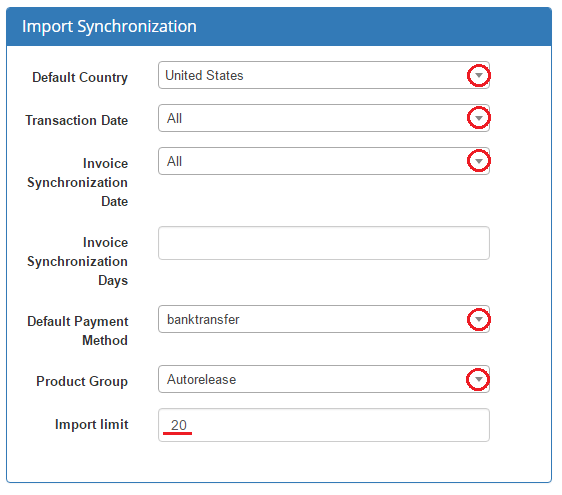
|
- Default Country - the default country that will be set for the clients imported from QuickBooks to WHMCS (QuickBooks does not return the country for customers)
- Transaction Date - downloads transactions according to a selected criterion, for example: 'This Month' will retrieve transactions from current QuickBooks month.
- Invoice Synchronization Date - gets invoices according to the selected criterion, for example: 'This Month' will retrieve invoices from current QuickBooks month.
- Invoice Synchronization Days - if set receives invoices, e.g. from the last 5 days.
- Default Payment Method - the default method that will be set for importing payments from QuickBooks to WHMCS.
- Product Group - the default group for the imported product.
- Import Limit - if the provided limit is reached, the script execution ends.
It is recommended to run a cron job every six hours in order to synchronize the data between QuickBooks Desktop and WHMCS.
To do so, use 'php -q /var/www/whmcs/modules/addons/QuickBooksDesktop/cron/cron.php' cron with the following arguments: '--syncClients --syncInvoices --syncPayments --syncProducts'.
In order to import new clients, invoices, payments or products from QuickBooks Desktop to your WHMCS, run 'php -q /var/www/whmcs/modules/addons/QuickBooksDesktop/cron/cron.php' cron
with the following arguments: '--importClients --importInvoices --importPayments --importProducts' once a day.
If you want to synchronize clients, invoices, payments or products you can also use the following arguments: '--syncClients --syncInvoices --syncPayments --syncProducts'.
'--failureNotifications' argument is responsible for sending email notifications of failure tasks, as specified in the 'Failure Notifications' section.
The last two fail-over '--exportPayments' and '--exportInvoices' arguments check if all payments and transactions have been exported within the last 24 hours, if not, a task to re-export missing items is created.
|
Logs
The 'Logs' tab contains ALL actions on clients, invoices and transactions.
Regardless of whether they were performed manually in the module, automatically or by a cron job.
You will find there a list of all entries with precisely described details and the exact date of the action.
|
| Clear all the entries or delete only some of them. Use the buttons marked on the screen above.
|
Dashboard
'Dashboard' includes two useful and user-friendly tables.
The first one, 'Export Summary' contains data on the number of exported clients, invoices and payments.
The number includes exports performed in all possible manners.
The second table shows information about the number of performed tasks with their statuses.
|
Documentation
| The very last tab - 'Documentation' , once clicked, will redirect you to the article you are currently reading!
|
Tips
| 1. Please note that QuickBooks Desktop supports the services of One Time type only. Other billing cycles cannot be added.
|
2. If you add a single transaction in WHMCS using the 'Add to Client's Credit Balance' option, a transaction corresponding to this one will be also created in QuickBooks.
Afterwards, when the customer pays the invoice using WHMCS credits, this invoice will also be added to the previously created transaction in QuickBooks (provided that there are sufficient funds in this transaction).
|
Update Instructions
Essential guidance through the process of updating the module is offered here.
Keep in mind there is a quick and easy option in our client area that will let you upgrade the license of your module to an open source version at any time - and at a lower price!
To take advantage of it, simply use the License Upgrade button located on the product's page and a discounted invoice will be generated automatically.
|
Common Problems
| 1. When you have problems with connection, check whether your SELinux or firewall does not block ports.
|
| 2. In rare cases, taxes might be counted incorrectly for invoices with multiple items, whereby a part of the items is taxed and some are not. Please, be careful!
|
3. In case you encounter any issues with installation and configuration please make sure you have php7.0-soap installed.
Without that the module will not work properly.
|
| 4. When .htaccess is enabled, the module may not work due to the lack of connection between QuickBooks Web Connector and WHMCS system.
|
| 5. In order for Web Connector to be linked with your WHMCS, your site has to be SSL certified.
|
|
6. If you get the following error: 'Got a packet bigger than 'max_allowed_packet' bytes' you need to increase the max_allowed_packet parameter on your server.
To do this, log in to your mysql console with administrator permissions and execute the following command:
SET GLOBAL max_allowed_packet=16777216;
This command can be also performed in your phpMyAdmin if you are logged in as the root user.
|
| 7. In case you see 'The given object ID "0" in the field "list id" is invalid.' error, please check that 'Default Products Item' or 'Domains Item' fields are properly configured.
|
| 8. If you get an error 'Object specified in the request cannot be found' during the invoice export, make sure that you have 'Accounts Receivable' field selected in general settings.
|
| 9. Long product names are automatically cut to the maximum of 31 characters to meet QuickBooks requirements.
|
